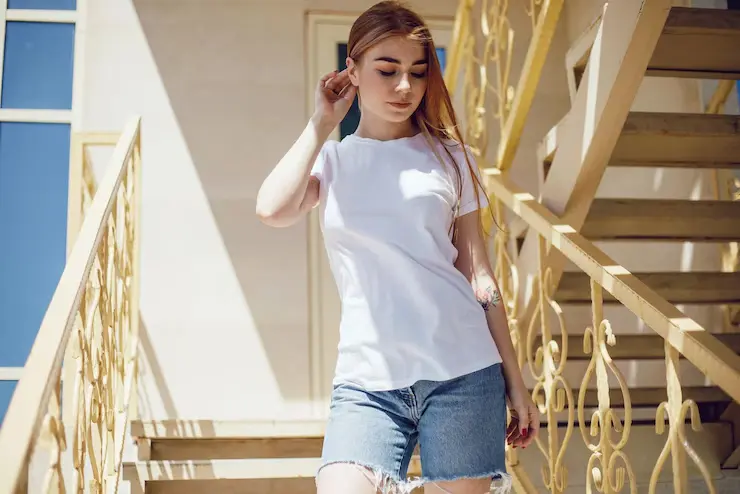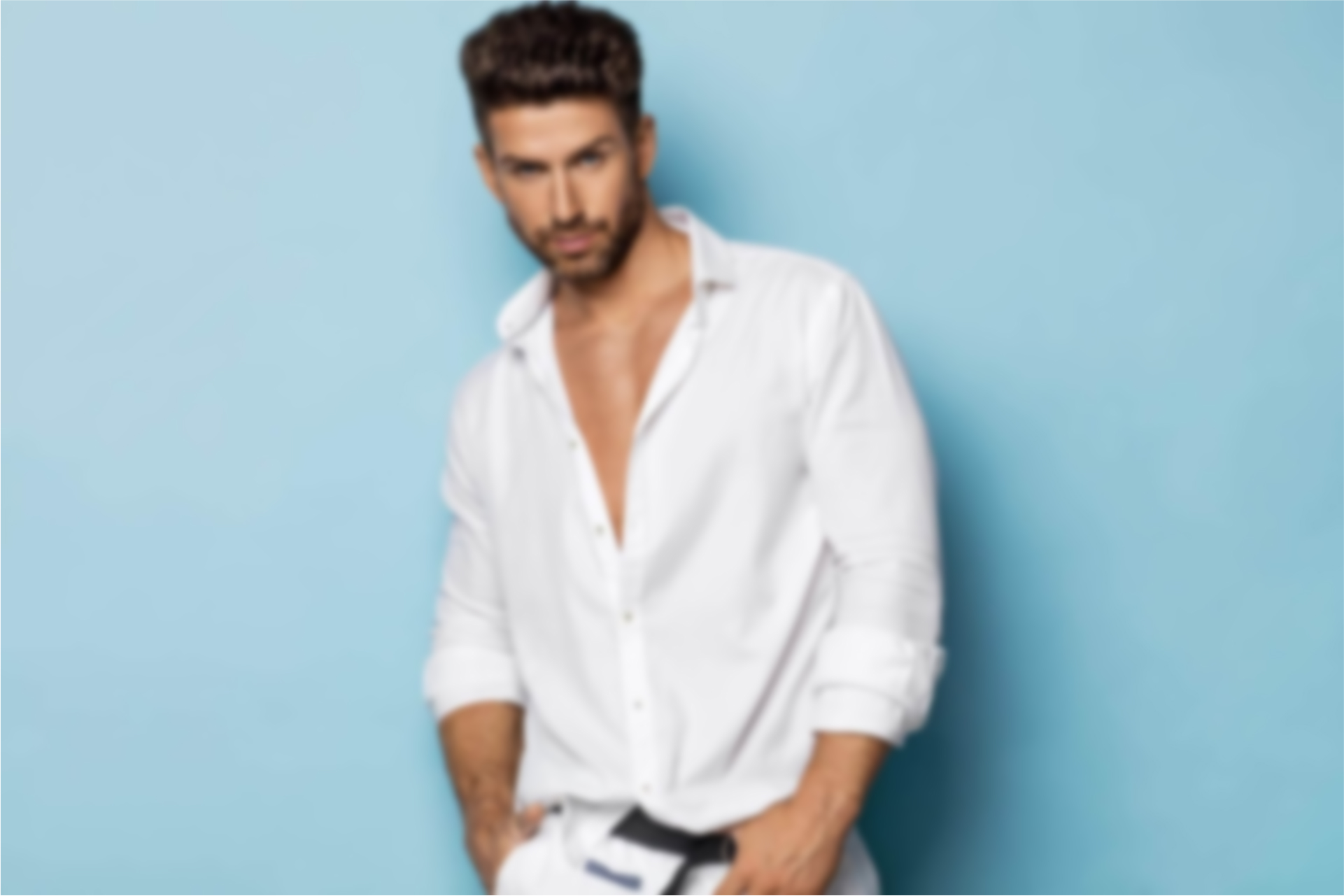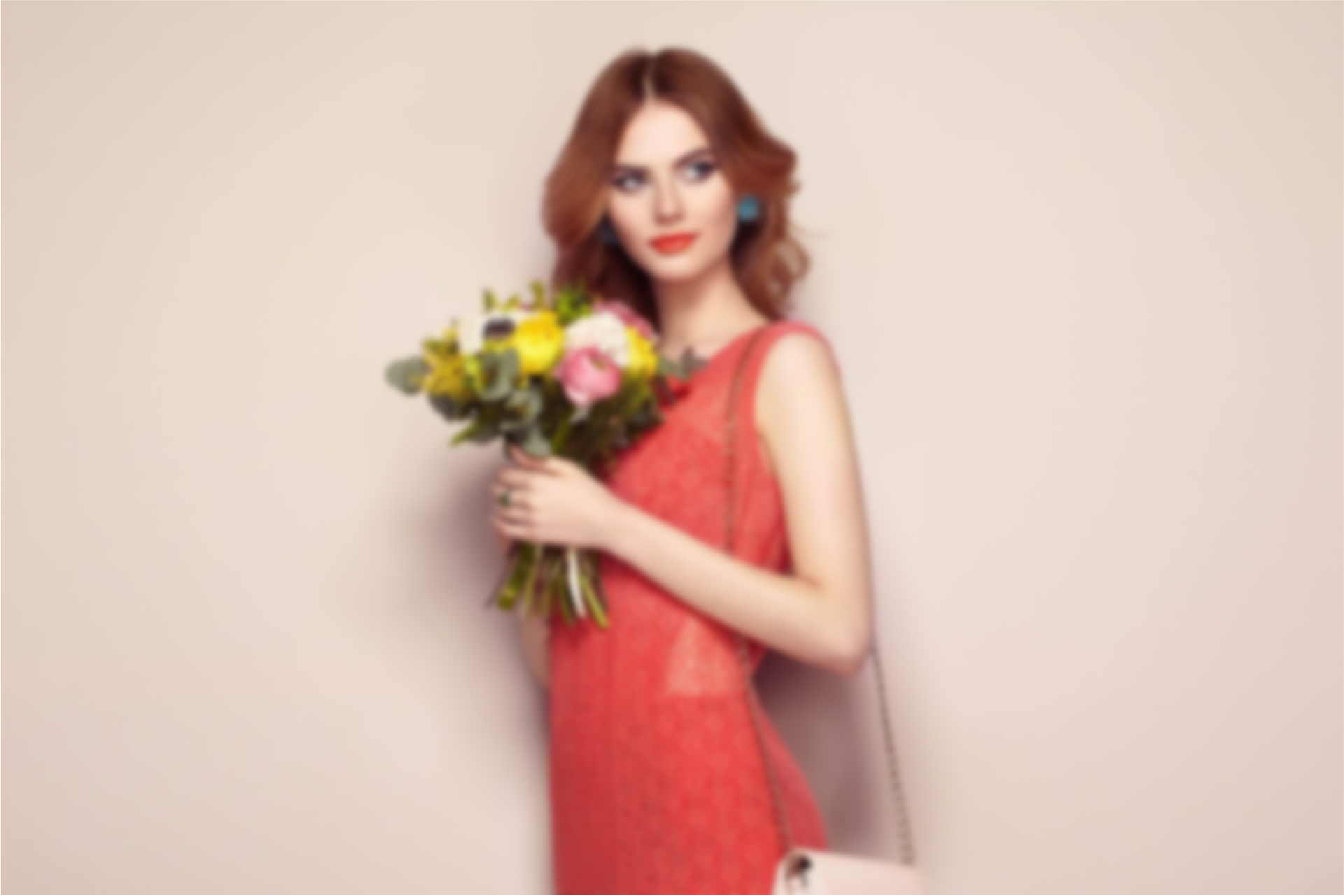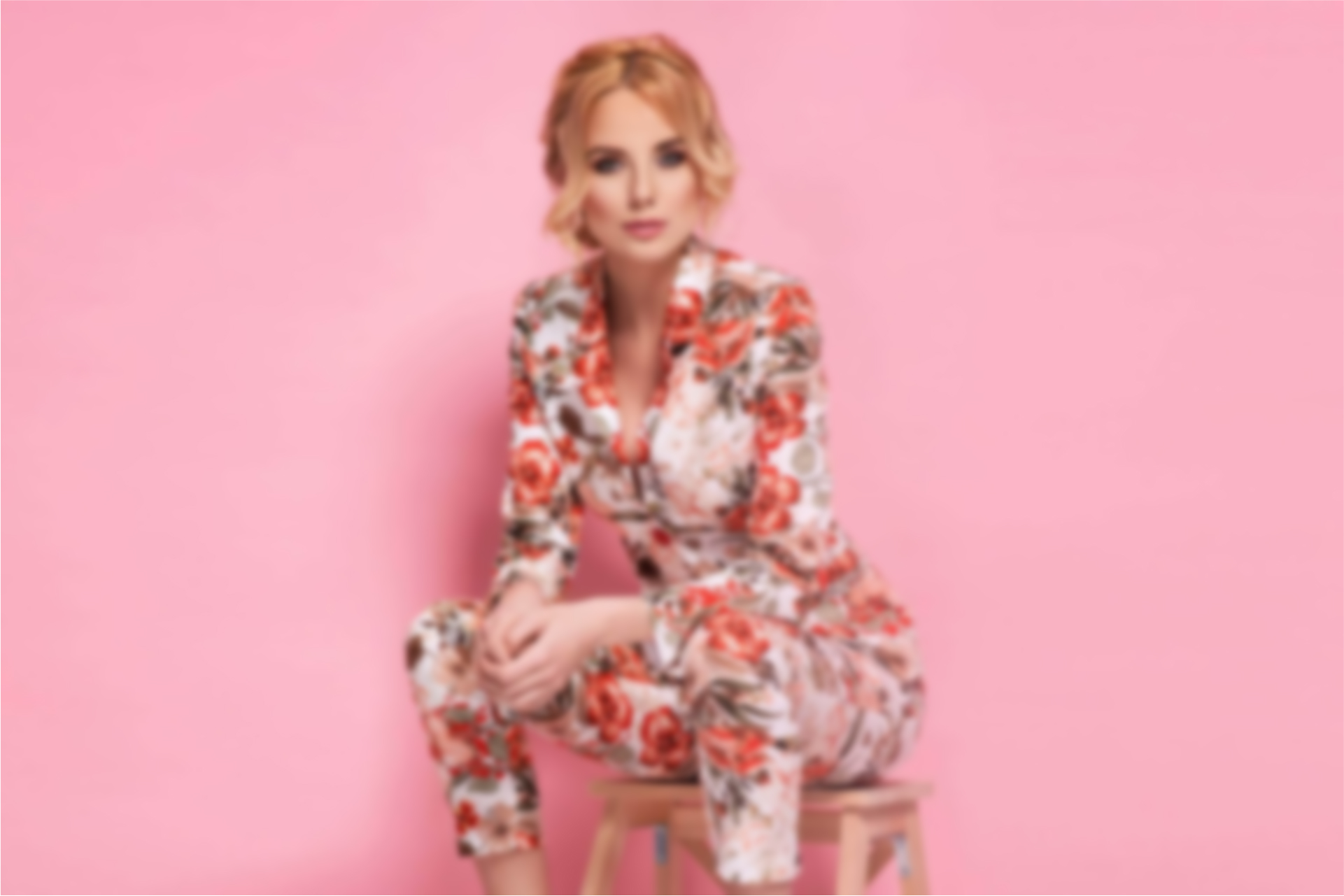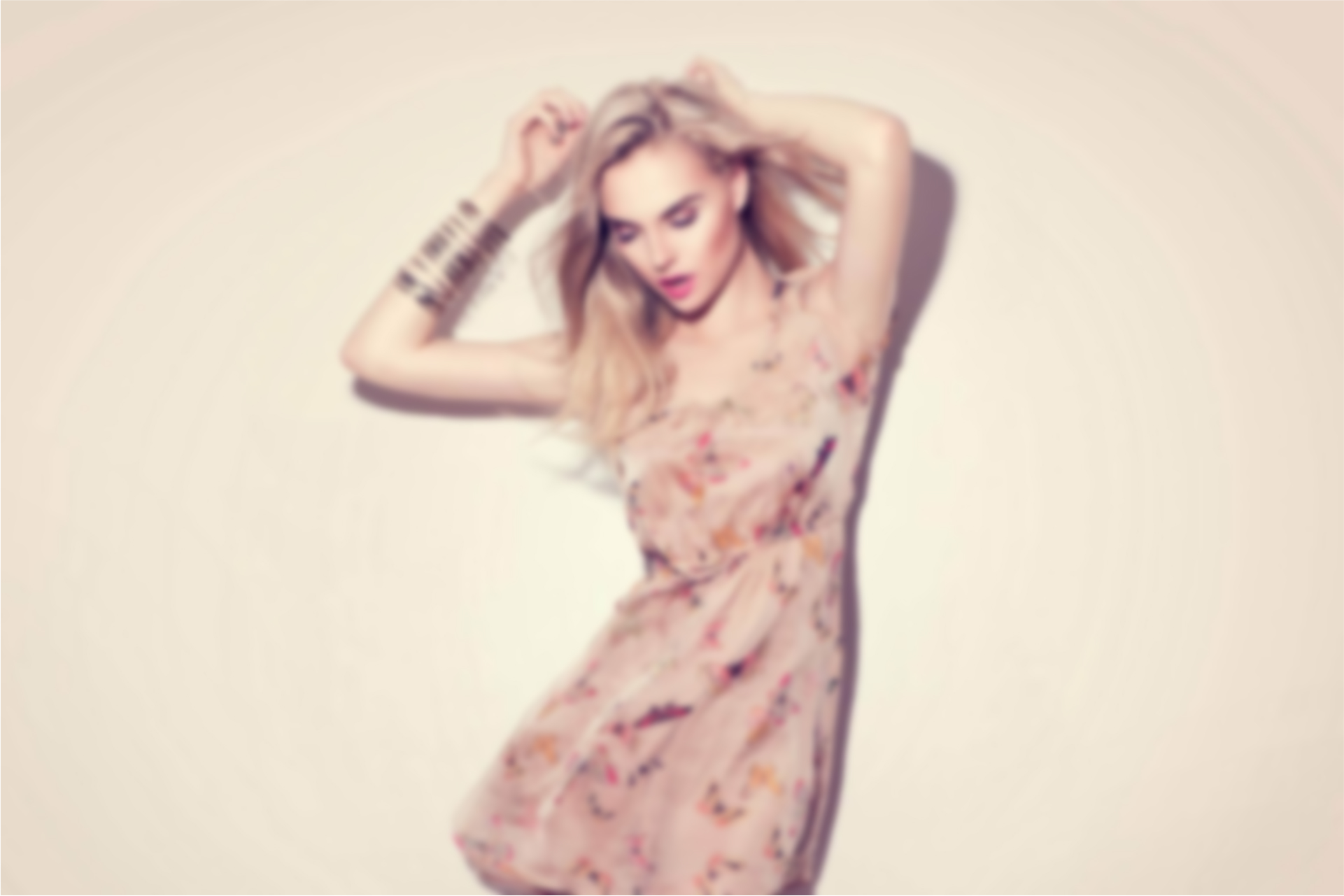Discover the latest Womens Knitwear Fashion trends with Dress Merchant, your trusted sourcing agent for premium apparel and garments. We connect global buyers with top-tier knitwear manufacturers and exporters, ensuring quality, style, and competitive pricing. Whether you’re sourcing seasonal collections or timeless pieces, Dress Merchant simplifies your buying process with expert guidance and reliable supplier networks. Let us elevate your knitwear sourcing strategy today.
Thank you for reading this post, don't forget to subscribe!1. The Enduring Allure of Women’s Knitwear
Women’s knitwear has transcended fleeting trends to become a perennial favorite in fashion, offering a unique blend of comfort, versatility, and sophisticated style. From the cozy embrace of a chunky sweater on a winter’s day to the elegant drape of a fine-gauge cardigan in a cool evening, knitwear embodies a practical luxury that resonates with women across all ages and lifestyles.
Its inherent adaptability allows for a seamless transition from casual outings to more formal events, making it an indispensable component of any well-curated wardrobe. The very nature of knitted fabric – its elasticity, warmth, and soft texture – contributes to its widespread appeal, providing both physical comfort and a sense of effortless chic. Beyond mere utility, knitwear has evolved into a canvas for creative expression, with designers continually experimenting with new yarns, stitches, and silhouettes to push the boundaries of what is possible with a needle and thread.
1.1 A Rich Tapestry of History and Evolution
The history of knitwear is as rich and intricate as the fabrics themselves, tracing its origins back thousands of years to rudimentary looping techniques that predated modern knitting. From humble beginnings as practical garments for fishermen and laborers, knitwear gradually ascended the fashion ladder, gaining prominence in the 17th and 18th centuries with the advent of knitting machines.
The 20th century witnessed an explosion in knitwear’s popularity, fueled by designers like Coco Chanel, who championed comfortable and liberating silhouettes. Post-war eras saw knitwear become a symbol of everyday elegance, with iconic figures popularizing cardigans, twin sets, and polo necks. Today, the legacy continues, with innovative techniques and sustainable practices shaping the future of this beloved textile art form.
1.2 The Art of Texture and Tactile Appeal
One of the most compelling aspects of knitwear is its unparalleled tactile appeal and the myriad of textures it can present. Unlike woven fabrics, which often have a flat, uniform surface, knitted garments inherently possess a three-dimensional quality derived from their looped construction. This allows for an incredible range of textures, from the smooth, almost liquid feel of merino wool to the robust, nubbly character of a hand-knitted cable stitch.
The interplay of light and shadow on these varying textures adds depth and visual interest to an outfit, transforming a simple garment into a sensory experience. This emphasis on touch and feel contributes significantly to the emotional connection many people have with their knitwear, making it a source of comfort and luxury.
1.3 Adaptability Across Seasons and Climates
The inherent adaptability of knitwear across different seasons and climates is a testament to its genius. While often associated with cooler weather, knitwear’s versatility extends far beyond winter warmth. Lightweight cotton knits and linen blends are perfect for spring and summer, offering breathability and a comfortable alternative to woven fabrics. Fine-gauge merino wool or cashmere can provide warmth without bulk, making them ideal for layering in transitional weather.
The ability to regulate body temperature, whether through the insulating properties of a chunky sweater or the airy feel of an open-knit top, ensures that knitwear remains a relevant and practical choice year-round. This multi-seasonal functionality underscores its value as a foundational element in any wardrobe.
2. Decoding the Diverse World of Knitwear Yarns
The choice of yarn is arguably the most critical factor in determining the look, feel, and performance of any knitwear garment. Each fiber, whether natural or synthetic, brings its own unique set of characteristics to the table, influencing everything from the drape and warmth to the texture and durability. Understanding the properties of different yarns allows consumers to make informed decisions that align with their needs and preferences, ensuring comfort, longevity, and ethical considerations. From the luxurious softness of cashmere to the rugged resilience of tweed, the world of knitwear yarns is a fascinating and diverse landscape, offering endless possibilities for creativity and functionality.
2.1 Natural Fibers: The Essence of Luxury and Comfort
Natural fibers are highly prized in knitwear for their breathability, softness, and often, their sustainable origins. Wool, in its many forms (merino, alpaca, Shetland), is renowned for its warmth, moisture-wicking properties, and elasticity. Cashmere, derived from cashmere goats, stands out for its exquisite softness, lightness, and exceptional insulation. Silk offers a luxurious sheen, smooth drape, and excellent temperature regulation, making it suitable for year-round wear. Cotton, a plant-based fiber, is a popular choice for its breathability, absorbency, and hypo-allergenic qualities, ideal for warmer climates or sensitive skin. These natural materials often develop a beautiful patina over time, becoming softer and more comfortable with each wear, further enhancing their appeal.
2.2 Synthetic Yarns: Innovation and Practicality
Synthetic yarns have revolutionized the knitwear industry, offering a wide array of practical benefits such as durability, affordability, and ease of care. Acrylic, a common synthetic, is known for its wool-like feel, colorfastness, and resistance to shrinking and stretching. Nylon adds strength and elasticity, often blended with other fibers to improve wearability and shape retention.
Polyester, another versatile synthetic, is celebrated for its wrinkle resistance, quick-drying properties, and ability to hold vibrant colors. While sometimes lacking the natural breathability of their counterparts, synthetic yarns are invaluable for creating innovative textures, achieving specific performance attributes, and making fashion accessible to a broader audience. Advancements in synthetic fiber technology continue to improve their feel and environmental footprint.
2.3 Blended Yarns: The Best of Both Worlds
Blended yarns represent a clever synergy of different fibers, combining the desirable characteristics of each to create fabrics with enhanced performance and aesthetic appeal. For instance, a wool-cashmere blend might offer the warmth and resilience of wool with the added luxurious softness of cashmere, at a more accessible price point than pure cashmere. A cotton-silk blend could provide the breathability of cotton with the elegant drape and sheen of silk.
These thoughtful combinations allow designers to achieve specific textures, improve durability, enhance drape, or increase comfort, often resulting in garments that outperform single-fiber alternatives. Blends also offer opportunities to manage costs while maintaining a high standard of quality and feel, making them a popular choice across various price points.
3. Key Knitwear Silhouettes and Their Fashion Impact
The silhouette of a knitwear garment plays a pivotal role in defining its overall aesthetic and how it flatters the body. From relaxed, oversized shapes that prioritize comfort to sleek, fitted designs that emphasize contours, knitwear offers a vast spectrum of forms that cater to diverse stylistic preferences and body types.
Understanding these various silhouettes is essential for both designers creating collections and consumers building their wardrobes, as it dictates how a piece will hang, move, and integrate with other garments. The interplay of fabric drape, stitch patterns, and garment construction all contribute to the final shape, making knitwear a fascinating area of fashion design where form truly follows function, albeit with a stylish twist.
3.1 The Enduring Comfort of Oversized and Relaxed Fits
Oversized and relaxed fit knitwear has become a cornerstone of contemporary comfort fashion, offering a liberating alternative to more structured garments. These silhouettes are characterized by their generous proportions, often featuring dropped shoulders, wider sleeves, and a more voluminous body. This intentional looseness allows for effortless layering, providing warmth without restriction and a distinctly laid-back yet chic aesthetic.
Perfect for creating cozy, inviting looks, oversized sweaters and cardigans exude an air of approachable sophistication. They offer a flattering drape for many body types, gently skimming over the figure rather than clinging, making them a popular choice for both casual and elevated everyday wear. The relaxed fit truly embodies a sense of ease and unpretentious style.
3.2 Structured and Fitted Knitwear: Emphasizing Form
In contrast to relaxed styles, structured and fitted knitwear designs are crafted to emphasize the body’s natural contours, offering a sleek and refined aesthetic. These pieces often incorporate ribbing, shaping, and sometimes even innovative knitting techniques to create a more defined silhouette. Examples include fitted turtlenecks that highlight the neckline, body-con knit dresses that sculpt the figure, and tailored knit jackets that provide a soft yet defined structure.
This type of knitwear is ideal for creating polished, sophisticated looks, perfect for office wear or more formal occasions where a sharp, put-together appearance is desired. The precise fit allows for a clean line and can be incredibly flattering when chosen correctly, showcasing the garment’s construction and the wearer’s shape.
3.3 Versatile Cardigans and Pullovers: Wardrobe Staples
Cardigans and pullovers stand as two of the most ubiquitous and versatile knitwear silhouettes, forming the foundation of countless wardrobes. Pullovers, slipped on over the head, range from classic crew necks and V-necks to sophisticated turtlenecks and relaxed boat necks. They serve as excellent standalone pieces or as foundational layers under jackets and blazers.
Cardigans, with their open front, offer unparalleled layering potential, transitioning effortlessly from casual to formal settings. They can be long and flowing for a dramatic effect, cropped and fitted for a neat look, or chunky and oversized for warmth. Both categories are essential for their ability to adapt to various outfits and temperatures, making them invaluable for creating both casual and polished ensembles with ease.
4. The Craft of Knitwear: Techniques and Embellishments
Beyond the yarn and silhouette, the artistry of knitwear lies in the vast array of techniques and embellishments employed during its creation. These elements not only contribute to the garment’s aesthetic appeal but also dictate its texture, drape, and overall durability.
From intricate stitch patterns that create visual interest to delicate embroidery that adds a touch of luxury, each technique represents a skilled manipulation of yarn, transforming simple threads into complex, beautiful fabrics. Understanding these details provides a deeper appreciation for the craftsmanship involved in knitwear production and highlights the endless creative possibilities within this textile art form.
4.1 Unveiling the Beauty of Stitch Patterns
Stitch patterns are the very DNA of knitted fabric, dictating its texture, elasticity, and visual appeal. Basic stitches like knit and purl form the foundation, creating smooth stockinette or ribbed textures. Beyond these, the complexity grows exponentially with techniques like cables, which create raised, rope-like designs, adding three-dimensional depth and warmth.
Lace knitting involves purposeful holes and openwork, resulting in delicate, airy fabrics perfect for lighter garments or decorative details. Aran patterns, originating from Irish fishing communities, are a rich tapestry of cables, diamonds, and moss stitches, each often carrying symbolic meaning. The interplay of these patterns can transform a simple yarn into a work of art, giving each knitwear piece a unique character and story.
4.2 Embellishments: Adding Flair and Personalization
Embellishments elevate knitwear from functional garments to expressions of personal style, adding unique flair and intricate detail. Embroidery, whether subtle or bold, can introduce contrasting colors, textures, and motifs directly onto the knitted surface, creating bespoke designs. Appliqués, where separate fabric pieces are attached, can add whimsical elements or structured accents.
Beads and sequins, carefully integrated, catch the light and introduce a touch of sparkle and luxury, transforming a basic sweater into an evening statement piece. Fringing, tassels, and pom-poms add playful movement and a bohemian touch. These embellishments not only enhance the visual appeal but also allow for personalization, making each knitwear item a distinct reflection of individual taste and craftsmanship.
4.3 Sustainable Practices in Knitwear Production
As awareness of environmental impact grows, sustainable practices are becoming increasingly vital in knitwear production. This encompasses a holistic approach, starting with the sourcing of yarns. Organic cotton, recycled wool, and innovative plant-based fibers like Tencel and bamboo offer eco-friendly alternatives to conventional materials.
Dyeing processes are being revolutionized with low-impact dyes and water-saving techniques. Ethical manufacturing practices ensure fair labor conditions and responsible waste management. Furthermore, the rise of “slow fashion” encourages consumers to invest in high-quality, durable knitwear designed to last, reducing the need for frequent replacements and minimizing textile waste. By embracing sustainability, the knitwear industry is working towards a future where fashion is both beautiful and environmentally responsible.
5. Knitwear as a Fashion Statement: Styling Tips and Trends
Knitwear has evolved far beyond its humble origins as a purely utilitarian garment, becoming a powerful tool for expressing personal style and embracing current fashion trends. Its inherent versatility allows for a myriad of styling possibilities, transforming a simple sweater into a sophisticated ensemble or a cozy cardigan into a chic layering piece.
Understanding how to integrate knitwear effectively into an outfit, from choosing the right silhouette and texture to mastering the art of layering, is key to unlocking its full fashion potential. From classic pairings to unexpected combinations, knitwear continues to inspire creative dressing and remains a cornerstone of contemporary fashion.
5.1 Mastering the Art of Layering with Knitwear
Layering is perhaps the most fundamental and effective way to utilize knitwear for both warmth and style. A fine-gauge turtleneck can be worn under a blazer or a slip dress, adding an extra dimension and warmth. An oversized cardigan can be draped over a t-shirt and jeans for a relaxed yet chic look. The key to successful layering lies in balancing proportions and textures.
Combining different weights of knitwear, such as a chunky sweater over a thin knit camisole, creates visual interest and depth. Layering also allows for adaptability to changing temperatures, making knitwear an incredibly practical choice for transitional seasons. This technique transforms individual pieces into cohesive, dynamic outfits.
5.2 Seasonal Knitwear Trends: From Cozy to Chic
Knitwear trends fluctuate with the seasons, continually reinventing classic styles and introducing new silhouettes, colors, and textures. In colder months, chunky knits, cable patterns, and rich, earthy tones dominate, with oversized cardigans and statement sweaters taking center stage. As temperatures rise, lighter-weight knits emerge, featuring openwork patterns, breathable blends like cotton and linen, and vibrant pastels or crisp whites.
Cropped cardigans, knit polo shirts, and delicate knit skirts become popular choices. Furthermore, designers often reintroduce vintage-inspired knitwear, such as argyle patterns or retro-fitted cardigans, alongside futuristic metallic knits or deconstructed designs. Staying abreast of these seasonal shifts allows for fresh and contemporary knitwear styling.
5.3 Accessorizing Knitwear: Enhancing Your Look
Accessories play a crucial role in elevating and personalizing knitwear outfits, transforming a basic garment into a complete and polished look. A statement belt can cinch the waist of an oversized sweater, creating a more defined silhouette. Scarves, whether silk or chunky knit, add color, texture, and warmth around the neck.
Delicate necklaces or bold statement jewelry can draw attention to the neckline of a sweater. Hats, from beanies to wide-brimmed felt hats, can complement the cozy feel of knitwear. Furthermore, the choice of footwear – from ankle boots with a long knit dress to sneakers with a casual knit top – can significantly alter the overall vibe of an outfit. Thoughtful accessorizing brings individuality and refinement to knitwear ensembles.
6. The Versatility of Knitwear in Different Settings
The inherent adaptability of knitwear makes it a true chameleon in the fashion world, seamlessly transitioning across various settings, from the most casual to surprisingly formal. This versatility stems from the diverse range of yarns, gauges, and silhouettes available, allowing knitwear to be dressed up or down with remarkable ease.
Whether you’re aiming for comfort at home, professionalism in the office, or sophisticated elegance for an evening out, there’s a knitwear piece perfectly suited to the occasion. Its ability to combine comfort with style makes it an invaluable asset in any woman’s wardrobe, truly exemplifying functional fashion.
6.1 Casual Comfort: Everyday Knitwear Essentials
For everyday casual wear, knitwear shines in its ability to provide comfort without sacrificing style. Soft, oversized sweaters paired with jeans offer an effortless yet chic look perfect for running errands or relaxed weekends. Comfortable knit cardigans act as perfect layering pieces over t-shirts or camisoles. Basic knit tops, whether long-sleeved or short-sleeved, form the foundation of countless relaxed outfits.
The emphasis here is on breathable yarns like cotton or lightweight wool blends, ensuring maximum comfort for extended wear. These pieces are designed for ease of movement and a laid-back aesthetic, making them go-to options for everyday situations where comfort is key.
6.2 Professional Polish: Knitwear in the Workplace
Knitwear has increasingly found its place in the professional wardrobe, offering a more comfortable and flexible alternative to traditional tailored garments. Fine-gauge knit cardigans or sophisticated knit blazers can provide a polished yet soft alternative to structured jackets. Knit dresses, especially those in classic silhouettes and solid colors, offer a comfortable and chic option for the office.
Fitted knit tops and turtlenecks layered under suits or skirts create a refined look. The key to professional knitwear lies in choosing high-quality yarns, impeccable finishes, and classic designs that convey professionalism and attention to detail, ensuring an elegant and appropriate appearance for the workplace.
6.3 Evening Elegance: Elevated Knitwear for Special Occasions
While often associated with casual wear, knitwear can be surprisingly elegant and sophisticated for evening occasions. Luxurious yarns like cashmere, silk blends, or angora in fine gauges can create stunning evening pieces. Think of a shimmering metallic knit top paired with a flowing skirt, or a beautifully draped knit dress with intricate details. Embellishments such as subtle beading, delicate lace inserts, or unique stitch patterns can transform knitwear into true statement pieces.
The natural drape and softness of knit fabrics can lend an alluring and comfortable elegance, offering a refreshing alternative to traditional evening wear and proving that knitwear can indeed be red-carpet worthy.
7. The Evolution of Knitwear in High Fashion and Designer Collections
Knitwear’s journey from functional garment to high-fashion staple is a testament to its boundless creative potential. Leading designers consistently push the boundaries of what is possible with knitted fabrics, transforming humble yarns into avant-garde creations and redefining contemporary luxury. Runway shows often feature innovative knitwear that showcases intricate techniques, unexpected silhouettes, and daring material combinations. This ongoing exploration has cemented knitwear’s position as a vital and dynamic category within haute couture and ready-to-wear collections, influencing global fashion trends and inspiring countless stylistic interpretations. The evolution continues, driven by a blend of artistic vision and technical mastery.
7.1 Iconic Designers and Their Knitwear Legacies
Many iconic designers have left an indelible mark on the world of knitwear, elevating it to an art form. Coco Chanel famously championed comfortable jersey knitwear in the early 20th century, liberating women from restrictive corsetry. Sonia Rykiel, known as the “Queen of Knitwear,” built an empire on innovative, often inside-out, vibrant knit designs that celebrated the female form. Missoni revolutionized knitwear with their distinctive zigzag patterns and kaleidoscopic color combinations, creating instantly recognizable and coveted pieces. These designers, among others, demonstrated knitwear’s potential for both comfort and high style, proving that knitted garments could be as chic and desirable as any woven fabric.
7.2 Avant-Garde Knitwear: Pushing Creative Boundaries
Avant-garde knitwear pushes the conventional limits of design, exploring experimental techniques, unconventional materials, and sculptural forms. Designers often employ sophisticated knitting machines or intricate hand-knitting methods to create three-dimensional textures, unexpected volumes, and deconstructed silhouettes. This can involve incorporating diverse materials like metal threads, plastic, or even optical fibers into knits, or experimenting with felting, fulling, and extreme gauge variations.
The goal is to create statement pieces that challenge perceptions of knitwear, transforming it into wearable art. While not always practical for everyday wear, avant-garde knitwear significantly influences mainstream fashion, inspiring new trends and showcasing the technical prowess and artistic vision within the industry.
7.3 Knitwear on the Runway: Trendsetting and Innovation
The runway serves as a crucial platform for showcasing the latest innovations and trends in knitwear, demonstrating its ever-evolving role in high fashion. Designers present collections featuring groundbreaking knit constructions, such as seamless garments, engineered patterns, or new interpretations of classic stitches. The choice of yarn, from sustainable blends to futuristic synthetics, often reflects broader industry shifts. Runway knitwear often experiments with bold color palettes, unexpected layering combinations, and dramatic silhouettes, setting the tone for upcoming seasons. These presentations not only influence consumer choices but also inspire smaller brands and fast fashion, disseminating knitwear trends throughout the global fashion landscape.
8. The Practicality and Care of Women’s Knitwear
While knitwear is beloved for its comfort and style, its longevity and appearance are heavily dependent on proper care. Different yarns require specific handling, and understanding these nuances is crucial for maintaining the integrity and beauty of your knitted garments.
From washing and drying techniques to storage solutions, diligent care ensures that your favorite sweaters, cardigans, and knit dresses remain in pristine condition for years to come. Investing time in proper knitwear care not only preserves your garments but also reflects a mindful approach to fashion and sustainability, reducing the need for frequent replacements.
8.1 Understanding Yarn-Specific Care Instructions
The first step in proper knitwear care is understanding the specific needs of the yarn. Wool and cashmere, for instance, often require gentle hand washing or dry cleaning to prevent shrinking and felting. Using a wool-specific detergent and cool water is essential. Cotton knits are generally more robust and can often be machine washed on a gentle cycle, though cold water and mild detergent are still recommended to prevent fading and shrinkage.
Synthetic blends are typically the easiest to care for, often machine washable and dryer-friendly on low heat. Always check the garment’s care label, as it provides the manufacturer’s specific recommendations based on the fabric composition and construction, ensuring optimal care.
8.2 Proper Washing and Drying Techniques
Washing knitwear correctly is paramount to its longevity. Hand washing is often preferred for delicate items: gently immerse the garment in cool water with mild detergent, squeezing (not twisting) the water through. Rinse thoroughly until the water runs clear. For machine washable items, use a mesh laundry bag to protect them from stretching or snagging, and select a delicate or wool cycle with cold water.
Drying knitwear properly is equally critical. Never hang wet knits, as this can cause them to stretch and lose their shape. Instead, gently roll the garment in a clean towel to absorb excess water, then lay it flat on a clean, dry surface or a drying rack, reshaping as needed, away from direct sunlight or heat.
8.3 Storage Solutions for Maintaining Knitwear Shape
Proper storage is key to preventing stretching, creasing, and damage to knitwear. For heavier sweaters and cardigans, folding them neatly and storing them on shelves or in drawers is generally recommended over hanging. Hanging can cause the shoulders to stretch out of shape due to the weight of the fabric. Delicate knits like cashmere or silk blends should also be folded.
For lighter knits or those that tend to wrinkle, a padded hanger in a well-ventilated closet might be suitable, but still exercise caution. Always ensure knitwear is completely dry before storing to prevent mildew. Using cedar blocks or lavender sachets can help deter moths and keep garments fresh, further extending their life.
9. The Environmental and Ethical Considerations in Knitwear
The fashion industry, including knitwear, faces increasing scrutiny regarding its environmental footprint and ethical practices. From the sourcing of raw materials to manufacturing processes and end-of-life disposal, every stage has an impact. As consumers become more conscious, the demand for sustainable and ethically produced knitwear is growing, pushing brands to adopt more responsible practices.
This shift involves addressing issues like resource consumption, pollution, waste generation, and fair labor, moving towards a more transparent and accountable industry. The future of knitwear lies in balancing aesthetic appeal and comfort with a deep commitment to planetary and social well-being.
9.1 Sourcing Sustainable Yarns and Fibers
The journey to sustainable knitwear begins with responsible yarn and fiber sourcing. This involves prioritizing materials that have a lower environmental impact. Examples include organic cotton, which avoids harmful pesticides, and recycled fibers (like recycled wool or polyester) that reduce waste and reliance on virgin resources. Innovative plant-based alternatives such as Tencel (lyocell) and Modal, derived from sustainably managed forests, offer eco-friendly options with excellent drape and feel. Furthermore, certified fibers like RWS (Responsible Wool Standard) ensure animal welfare and land management. Brands committed to sustainability actively seek out these materials, often providing traceability information to consumers, promoting transparency and informed choices.
9.2 Ethical Manufacturing and Labor Practices
Ethical manufacturing in knitwear encompasses fair labor practices, safe working conditions, and transparent supply chains. This means ensuring that workers throughout the production process, from sheep shearers to factory employees, are paid fair wages, work reasonable hours, and are not subjected to exploitative conditions.
Brands committed to ethical practices often undergo independent audits and certifications (e.g., Fair Trade, SA8000) to verify their adherence to labor standards. This also extends to minimizing the environmental impact of factories, including responsible water usage, energy consumption, and waste management. Choosing knitwear from brands that prioritize ethical manufacturing contributes to a more equitable and just fashion industry.
9.3 Reducing Waste and Promoting Circularity
Reducing waste is a critical aspect of sustainable knitwear, promoting a circular economy where materials are kept in use for as long as possible. This includes minimizing textile waste during production through efficient cutting and knitting techniques. Post-consumer waste is addressed by encouraging garment repair, resale, and recycling programs.
Brands are exploring innovative ways to upcycle old knitwear into new products or to break down fibers for reuse. Designing for durability and longevity also plays a significant role, ensuring garments have a longer lifespan. The goal is to move away from a linear “take-make-dispose” model towards a system where resources are continually cycled, drastically reducing environmental impact.
10. The Future of Women’s Knitwear: Innovation and Inclusivity
The landscape of women’s knitwear is constantly evolving, driven by technological advancements, shifting consumer desires, and a growing emphasis on inclusivity. The future promises even more innovative materials, personalized designs, and production methods that are both efficient and environmentally conscious.
Furthermore, the industry is increasingly recognizing the importance of designing knitwear that caters to a wider range of body types, ages, and style preferences, fostering a more inclusive and representative fashion environment. As knitwear continues to blend comfort with cutting-edge design, its role as a fundamental and dynamic category in fashion is set to expand even further.
10.1 Technological Advancements in Knitting
Technological advancements are rapidly transforming the knitwear industry, enabling unprecedented levels of innovation. Advanced knitting machines can now produce seamless garments, minimizing waste and enhancing comfort. 3D knitting technology allows for the creation of intricate, bespoke designs with incredible precision, opening doors for mass customization.
Digital printing on knitted fabrics offers new possibilities for vibrant patterns and graphic designs. Smart textiles, incorporating conductive yarns or sensors, are emerging, paving the way for knitwear with integrated technology for health monitoring or adaptive temperature control. These innovations are making knitwear more versatile, efficient to produce, and responsive to modern needs.
10.2 Personalized and Custom Knitwear Experiences
The future of knitwear is increasingly moving towards personalization and custom experiences. Consumers are seeking unique garments that reflect their individual style and fit their specific body measurements. Online platforms are emerging where customers can choose yarn types, colors, stitch patterns, and even upload their own designs for custom-made knitwear.
Tailored-to-fit options, made possible by 3D body scanning and advanced knitting technology, ensure unparalleled comfort and flattery. This shift empowers consumers to be co-creators in the design process, fostering a deeper connection with their clothing and moving away from mass-produced uniformity towards bespoke fashion.
10.3 Inclusivity and Diverse Sizing in Knitwear
The fashion industry is increasingly recognizing the importance of inclusivity, and knitwear is at the forefront of this movement, offering diverse sizing and designs for all body types. Brands are expanding their size ranges, ensuring that stylish and well-fitting knitwear is available for women of all shapes and sizes. Beyond just dimensions, inclusivity also means designing with diverse needs and preferences in mind, offering adaptive features or considering cultural sensitivities.
The inherent stretch and forgiving nature of knitted fabrics make them particularly well-suited for inclusive sizing, as they can comfortably drape and adapt to various figures, promoting body positivity and accessibility in fashion for everyone.
Conclusion: Womens Knitwear Fashion
At Dress Merchant, we recognize that Womens Knitwear Fashion is more than just a seasonal trend—it’s a dynamic fusion of comfort, creativity, and timeless appeal. As a trusted apparel and garments sourcing agent, we are committed to connecting global brands and retailers with top-tier knitwear manufacturers who understand the pulse of modern women’s fashion. From cozy winter essentials to breathable summer knits, our sourcing solutions ensure quality, style, and innovation at every step of the supply chain. Partner with Dress Merchant to elevate your womenswear collections with versatile, trend-aligned knitwear that meets the demands of today’s fashion-forward consumers.

